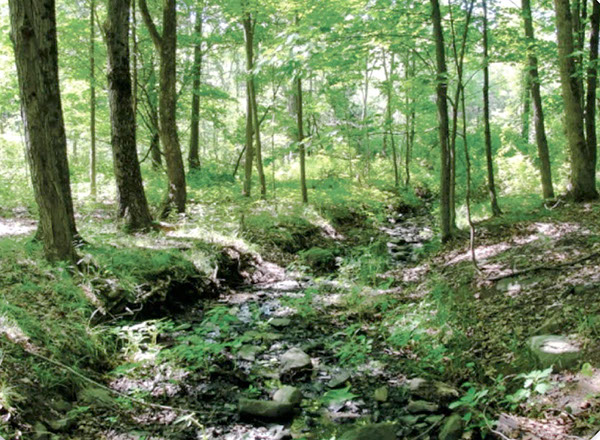

On Thursday, Sept. 4, the Town of New Paltz Clean Water and Open Space Protection Commission (CWOSP) presented its report to the town and village boards about the preservation of the Mill Brook.
CWOSP member Seth McKee said the town and village boards have accepted the plan but have not yet formally adopted it.
Michael Zierler, a New Paltz citizen and one of the first people who started this project over 10 years ago said the project was created to preserve open space, protect wildlife habitats, provide flood protection and provide recreational and educational opportunities for people in New Paltz.
“People can walk around and have a wilderness in the city feel because it’s several hundred acres and you can go in there pretty easily from a number of different neighborhoods,” Zierler said.
Zierler said the CWOSP asked the town and village boards to review the report carefully and to formally adopt the town-wide master plan for how the community grows and what land is protected.
The Town Board created the New Paltz Open Space Committee (OSC) in 2000. Zierler was one of the co-chairs. According to the report, the OSC received “funding from the New York State’s Hudson River Estuary Program to develop the preserve concept and a long-range management plan for the Mill Brook.”
Since receiving that funding in 2004, the Open Space Committee, now the CWOSP since 2007, has continued to work on this plan.
Zierler said if the Mill Brook were to be built up with houses, there would be significant flooding problems because the area acts as a sponge and controls flooding.
Workshops were held to educate the people of New Paltz and make them aware of public space issues, Zierler said. The workshops also helped establish a list of the 10 most important open spaces in New Paltz.
According to Zierler, not all of the Mill Brook land is protected because some of it is privately owned land. The town purchased an additional 60 acres of land that became publicly available in 2010 after voters’ approval.
The report said that the members involved recommended the acquisition of other properties within the preserved area.
“These lands are critical not only for maintaining the ecology of the major part of the stream corridor, but the only natural link between the Preserve and the Wallkill Valley Rail Trail as well. Acquisition could be through land purchases, or use of bought or donated conservation easements and trail easements,” the report stated.
McKee said the Mill Brook is an area that New Paltz residents should value.
“This forest is in the heart of New Paltz and it represents a great opportunity to save wetlands, save water resources and create opportunities for people to go and walk around in a very wilderness area of woods that feels very remote from civilization,” McKee said.
Once implemented by the town and village boards, Zierler said the next step is to put all of the lands under protection with the landowners and make them publically available. He also said they are looking for a group of citizens who are interested in setting up new trails, improving existing trails and setting up a long-term management plan of the preserve.
